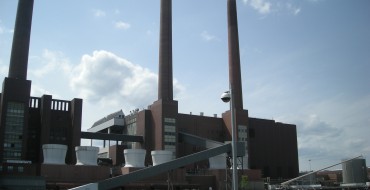- 24x7 Service and Support:
- 904.281.9595

A cooling tower is a technology used to vent heat into the air following an industrial process.
A cooling tower is able to vent the air by spraying the hot water over a material called a fill, which helps disperse the water and expose it to more air flow. One of the most common application for a cooling tower is to provide cooled water for air conditioning units, manufacturing and electric power generation. Small cooling towers can handle water streams of only a few gallons of water per minute, while the biggest can cool hundreds of thousands of gallons per minutes.
Cooling towers redirect heated water through spray nozzles onto materials called “fill.” A fill may consist of multiple, vertical wetted surfaces over which to spread thin films of water.
Once on the fill, the water flow is slowed, and thus exposing more water surface for the highest level of air-water contact. Water will descend down the tower, the water hits air moving through the tower by an induced draft fan. This causes a little water to be evaporated, creating a cooling action. At the bottom of the tower is often a basin in which to collect the cooled water, in order to feed it back through the condenser or industrial process. Cooling towers can usually be adjusted for a variety of factors, including performance, structure, drift and plume abatement.
Cooling towers come in two main types of technology, crossflow towers and counterflow towers. Crossflow towers allow water to flow vertically through the fill, with air coming in through a horizontal direction, cutting across the flow of the water. This allows for gravity to filter the hot water into basins. Counterflow cooling towers work by harnessing the upward flow of air, countering the flow of falling water. Gravity-flow basins usually can’t be used for counterflow towers. Instead, counterflow towers use spray nozzles to distribute the water over the top of the fill.
Cooling towers can also be classified based on how they move air through the tower. One technology is induced draft cooling, which relies on fans on the top of the unit to pull air through the tower. A forced draft tower works oppositely, by sending air up through the tower from the base. A forced draft tower is often used for an indoor facility.
Cooling towers can be assembled at factories and transported to the location or build on site. Small towers can be shipped intact but with larger systems, they may need to be shipped modularly and assembled on site. Factory assembled towers are also known as “packaged cooling tower.” One example is the Marley NC crossflow, induced draft tower, which is a popular option for HVAC or light industrial applications. Field-erected towers can be of crossflow and counterflow technology and often required for power or heavy-industrial uses. One useful choice is the Marley F400 counterflow tower, which has customizable options.
http://spxcooling.com/coolingtowers/detail/marley-nc-class-cooling-tower/





